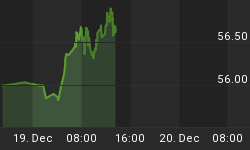The following is part of Pivotal Events that was published for our subscribers September 10, 2015.
Signs of The Times
"China's government has decided to abandon attempts to boost the stock market through large scale share purchases, and will instead intensify efforts to find and punish those suspected of 'destabilizing the market'."
- Perhaps the Shanghai Bubble was too big not to fail. The headline was from the Financial Times, August 30.
On June 15, 2014 the Financial Times reported:
"Central Banks Shift into Shares: Low Interest Rates"
It is worth noting that central bankers have been positioning equities in their reserves. Now the Bank of China seems to be averaging down.
"Technical factors can push the market away from fundamentals."
- Omega Advisors, Financial Times, September 3.
For us, the fundamental item was the probability that the Shanghai Bubble would climax in June. Technically, it needed the third set of Upside Exhaustion readings. Only one came in but it was enough to complete the mania.
"It is better to find bargains than build up cash."
- Market Watch, September 8.
Perspective
In a very intense move, China's financial mania completed and suffered a speculative collapse. This fit the usual pattern rather well and took other markets with it. The headlines provide a narrative on profound change and the last one about "bargains" is appropriate.
When?
Worth stressing is that China's efforts to keep stocks rising was instantaneous, massive and well-publicized but did not work. In quitting, the BoC admits to policy failure. As with any market imbalance in all of history and in all of the future, it will clear on its own.
Stock Markets
How much further can this phase of closing the difference between unusually elevated financial expectations and financial reality last?
First of all, the economy is only a sidebar in the main game and so is the Federal Reserve System.
The key point, however, is the dynamic force of the completion of a great financial mania and its consequent collapse. Because they have had such similarities, there is a fairly standard path. Which provides the "fundamental" research. Earnings and valuations had little influence on the characteristics of the final rally. Those that follow earnings and valuations were complacent.
Fundamentally, a significant low is possible in 6 to 8 weeks from now.
Technically, this would be identified by some Downside Capitulations and Sequential Buys.
The first step would be the test of the Black Monday low. On the S&P it was 1867.
The ultimate low for 2015 depends upon both stock market seasonality and the course of credit spreads.
Most sectors would likely set lows within a week or so of the key bottom for the senior indexes.
There could be some excitement on the way down to opportunity, so it is best to have a roadmap.
On the bigger picture, the NYSE Comp (NYA) made the Rounded Top with the high at 11254 in May. A Rounded Top usually sets a cyclical peak and the failure was taking out the July low of 10622. That happened on August 12th.
That also took out the 50-Week ma. The last Rounded Top was achieved in 2007, with the failure of the 50-Week accomplished at the end of the year.
By this measure, the pending low for the overall stock market could be equivalent to January 2008.
Our July 23rd Pivot concluded with "Today's action in credit markets is increasing the warning on the inevitable collapse of speculation."
Credit Spreads
The worst on widening pushed the spread out to 224 bps on Black Monday, August 24th. Some relief has been possible and it has come in to 221 bps. Last issue, we thought the correction could run for a couple of weeks.
In looking at the technical action, JNK/TLT rallied from .287 on the 24th to .309 at yesterday's open. This was right at the 200-Day ma and there is more resistance at .310.
Perhaps most of the relief in spreads has been accomplished.
The long bond did the right thing in rallying with the collapse into August 24th. The TLT became very overbought at 128.64 and at 119.56 yesterday morning it's below the 50-Day ma.
However, the market needs to test the spike up to 128.
JNK plunged from 39.65 in late April to 35.83 on August 24th. The rebound is trying to get above 37. The washout low needs to be tested.
As severe as it has been, this phase of financial turmoil has not been completely cleared.
Link to September 12, 2015 Bob Hoye and Ross Clark interview on TalkDigitalNetwork.com: http://talkdigitalnetwork.com/2015/09/this-week-in-money-16/
Listen to the Bob Hoye Podcast every Friday afternoon at TalkDigitalNetwork.com















